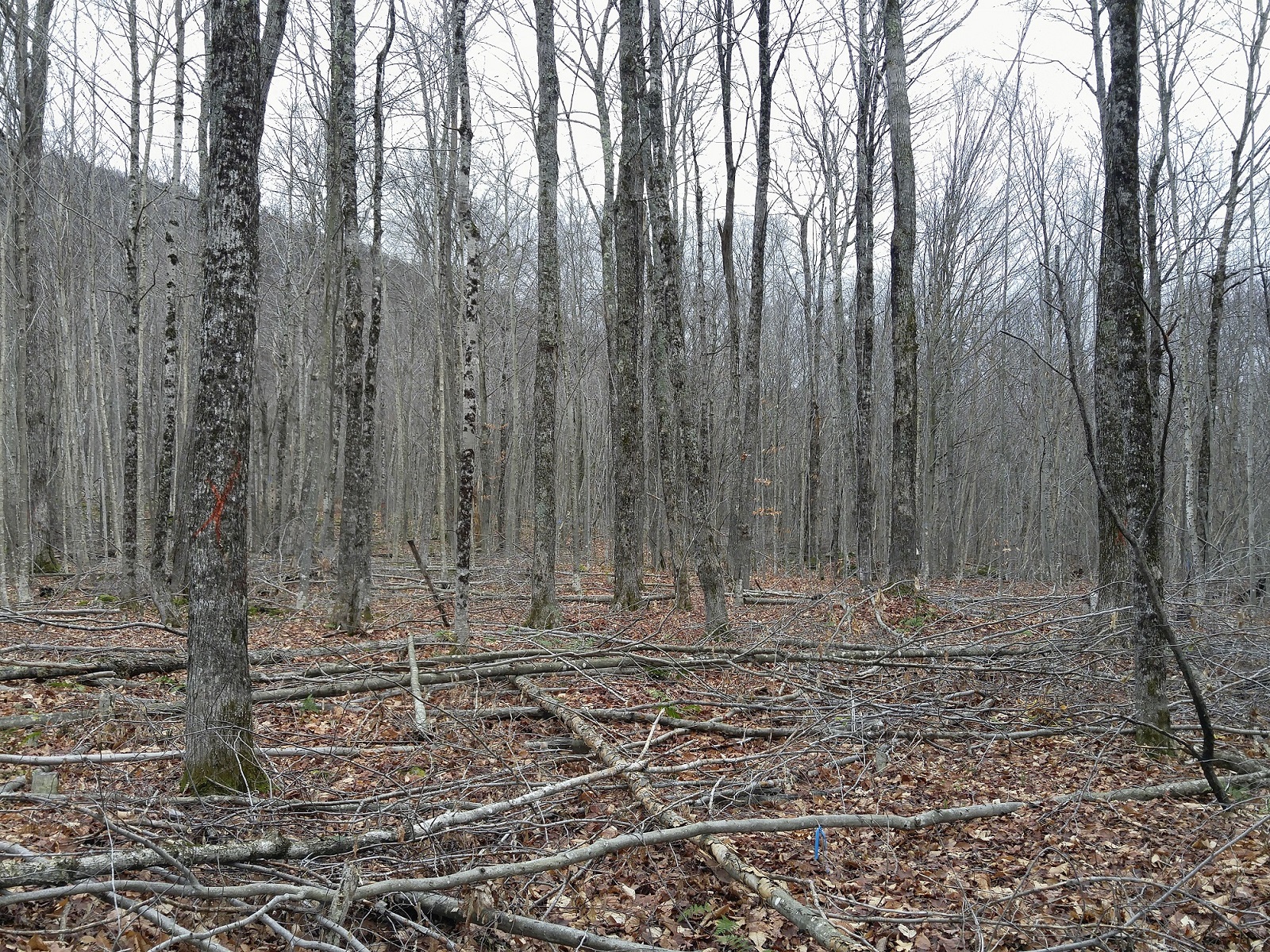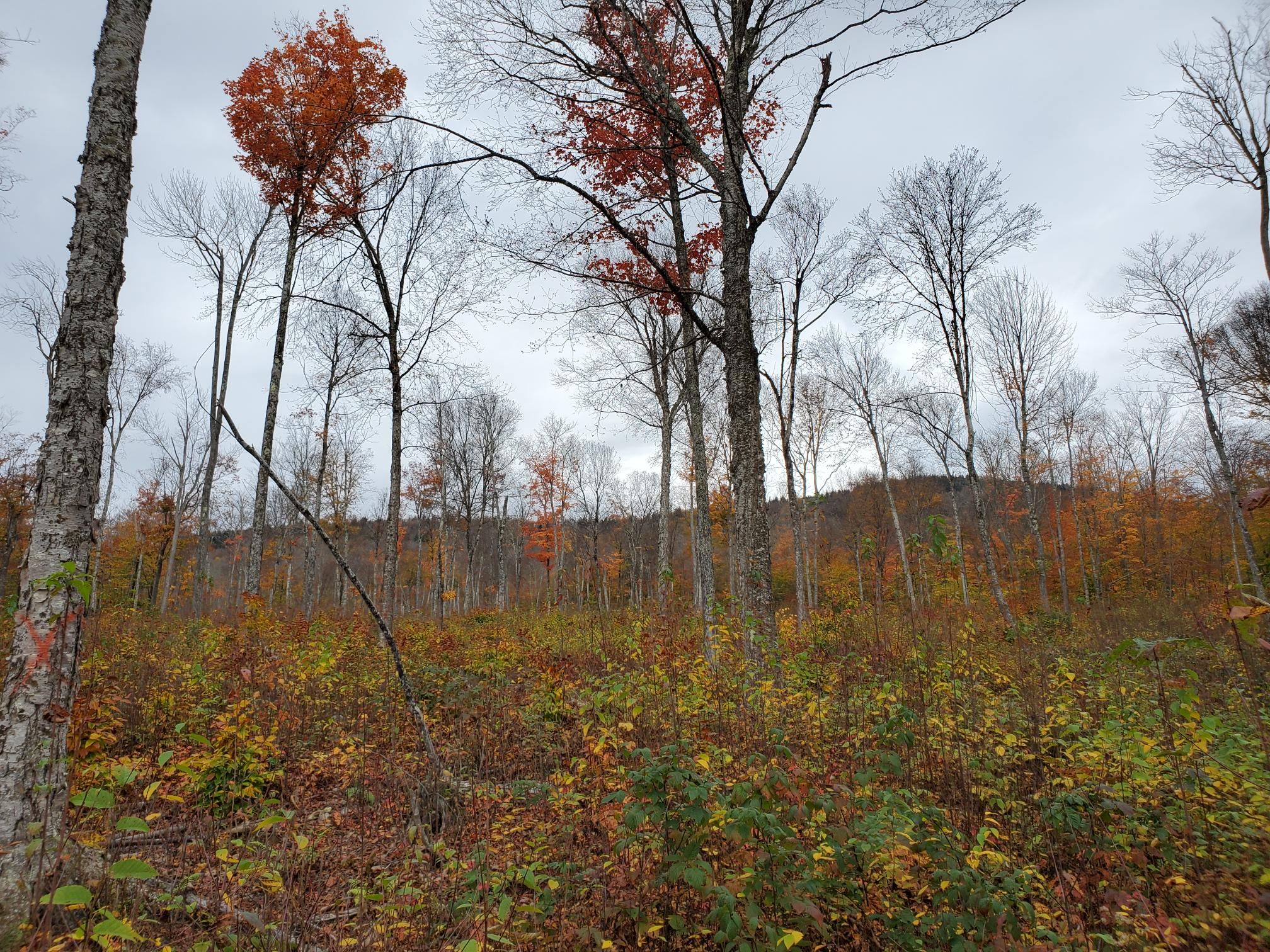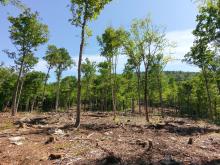Secondary tabs
Submission information
| Study Title | “La Playa” Beech Management (Groton State Forest, Vermont) |
|---|---|
| Case Study Type | Forest health, Management type |
| Management Subcategory | managing invasives |
| Site Photo |
|
| Image caption | Low-density shelterwood at Groton State Forest in areas in which understory beech were removed prior to establishment cutting |
| Lay Summary | Reduce abundance of diseased beech to encourage regeneration of healthy beech, yellow birch, red spruce, sugar maple, and eastern hemlock while preserving habitat value and structure. |
| Location | Groton, Vermont |
| Location Description | Groton State Forest, parcel 13 |
| Landowner Name | State of Vermont |
| Stand Area with Units | 154 acres |
| Cover Type | Northern Hardwoods |
| Primary Forest Health Threat | beech bark disease |
| Primary Pests/Disease | beech bark disease |
| Estimated Stand Year Origin | 1919 |
| Start date | Fri, 01/01/2016 - 00:00 |
| End date | Wed, 01/01/2020 - 00:00 |
| Stand History | The stand is an even-aged mature Northern Hardwood forest that was last entered with a thinning treatment in 1984. The pre-treatment basal area is 90 ft2/ac with a high proportion of unacceptable growing stock (47 ft2/ac) compared to acceptable growing stock (43 ft2/ac). In addition, previous thinning treatments have led to a well-developed understory and midstory layer dominated by American beech. There was an average of 534 beech stems per acre in the 1-3 inch diameter classes creating a significant barrier to recruitment of other species. |
| Pre-Treatment Species Composition | Sugar maple composes nearly 50% of the pre-treatment stand basal area with beech and yellow birch representing about 20% each (18% and 21%, respectively). Beech notably has only 2% acceptable growing stock and the lowest QMD (6 in) of all the species present. |
| Species 1 | Acer saccharum (sugar maple) |
| Species 1 Percent(%) | 48% |
| Species 2 | Betula alleghaniensis (yellow birch) |
| Species 2 Percent(%) | 23% |
| Species 3 | Fagus grandifolia (American beech) |
| Species 3 Percent(%) | 20% |
| Case Overview | The goals of this project are to: reduce abundance of diseased beech to encourage regeneration of healthy beech, yellow birch, sugar maple, red spruce, and eastern hemlock while preserving habitat value and structure; improve the health, growth, and quality of the residual trees by reducing stand density and selecting out diseased and poor-formed trees; and, provide an economic benefit to local logging contractors and mills at present and in the future through scheduled timber sales. This project is in collaboration with the University of Vermont Forestry Program, which is using measurements from the site to understand different options for increasing compositional diversity in areas with recalcitrant beech understories. |
| Silviculture Objectives | To enhance structural and compositional diversity through an even-aged management approach. Beech will inevitably remain a large component of the stand, yet solutions that reduce current abundance of beech regeneration and select for “clean” beech are sought to improve stand health. Yellow birch and sugar maple will be favored for regeneration as they are well suited for the site and in high abundance. Red spruce and eastern hemlock, more minor components of the stand will also be retained to enhance diversity and habitat value. Recruitment of cavity trees, snags and over mature legacy trees will also be a priority for habitat improvement. |
| Landowner Objectives | Enhance structural diversity within an even-aged management regime by retaining areas of desirable advance pole-timber regeneration, islands of reserves, mature to over-mature stems, maintaining intermittent stream buffers through the harvest area, and recruitment of a new cohort through creation of new openings. |
| Silviculture Prescription | A shelterwood harvesting approach will reduce the basal area to 30 ft2/ac primarily through removal of diseased, UGS beech. Prior to harvest, existing beech regeneration will be mechanically removed with a brushsaw. Yellow birch, sugar maple and red maple along with small patches of eastern hemlock and red spruce will be prioritized for retention. Likewise, “clean” beech, those that show resistance to the Nectria scale and any beech with bear claw marks will be retained. This “clean” beech may also be retained with a small buffer of potentially BBD-resistant surrounding regeneration. Crown size, vigor and form will also factor into retention decisions. To enhance structure and habitat capacity, ecologically-mature legacy trees and those with the potential to become cavity trees will also be retained. Snags will be left and recruited to average 2-3 snags per acre. |
| Regeneration Method | shelterwood |
| Factors Influencing Prescription Choice |
|
| Post-Treatment Assessment Done | yes |
| Post-Treatment Assessment Expected | no |
| Post-Treatment Assessment | Overstory Composition: Two years post-treatment (2020), only two residual trees have fallen, with an overall mortality rate of 2.33%. Meanwhile, the residual basal area has grown 4.5% since the harvest (33.83 ft2/ac following 2018 harvest, 35.35 ft2 /ac in 2020). Sugar maple accounts for the greatest proportion of residual tree basal area with beech reduced to a basal area of under 6 ft2/ac. Regeneration: The most recent results appear to suggest success in limiting beech regeneration. While beech represented almost 35% of all regeneration in 2016, the 2020 data indicates this has now been reduced to less than 4%. Outside of the expected increases in the early successional species (quaking aspen and pin cherry), yellow birch and sugar maple displayed the starkest post-treatment increases. |
| Treatment Notes | Summer 2016: Initial inventory followed by pre-treatment removal of understory beech. Summer 2018: Harvest conducted according to prescription. Late Summer 2018, 2019, 2020: Post-harvest plot inventories completed. All overstory trees and regeneration layers inventoried. Fall 2020: 16’ square exclosure installed to monitor impacts of browsing |
| Keyword(s) | beech bark disease, shelterwood, American beech, northern hardwoods, herbivory, Vermont |
| Data Available? | no |
| Basal Area Pre-Harvest | 90 |
| Basal Area Acceptable Growing Stock | 43 |
| Basal Area Units |
|
| Primary Contact | Scott Machinist |
| Contact Title | State Land Forester |
| Contact Organization | Vermont Forests, Parks and Recreation |
| Contact Email | scott.machinist@vermont.gov |
| Contact Phone | +1 802-751-0110 |
| Additional Photo 1 |

|
| Caption 1 | Areas in which beech stems were mechanically treated with brush saws prior to estalishment cutting (Fall 2017) |
| Additional Photo 2 |

|
| Caption 2 | Low-density shelterwood (Fall 2021) |
